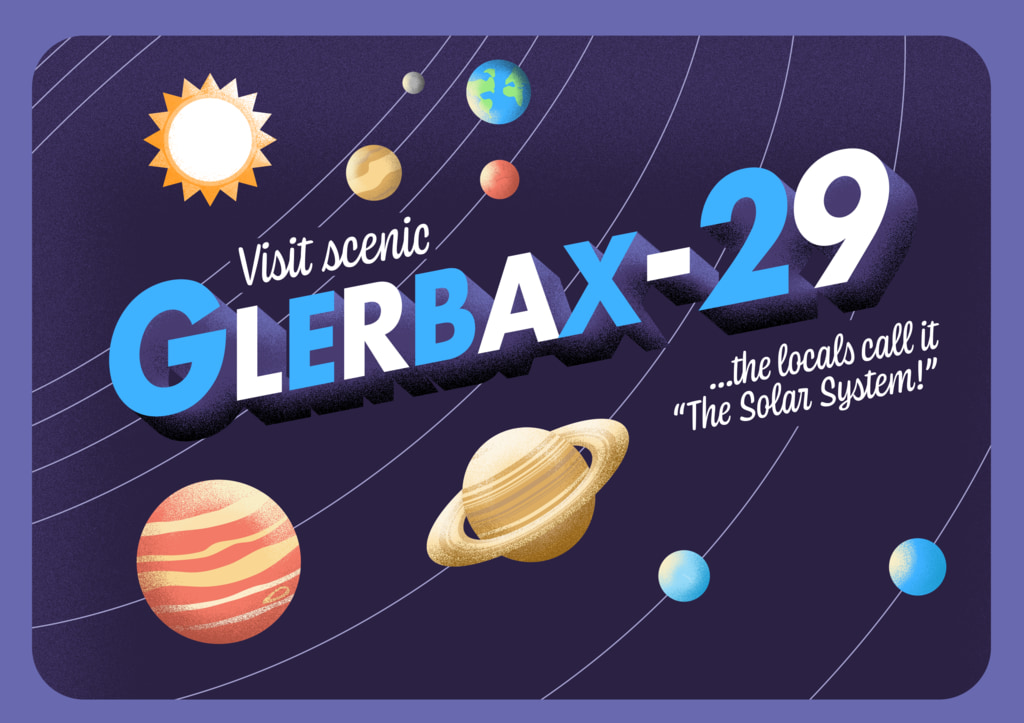NASA’s Guide to Visiting a Gamma-Ray Burst
Our intrepid Traveler has decided to visit a gamma-ray burst for their next vacation. If you’d like to follow their adventure, check out this video for tips and tricks.
Credit: NASA's Goddard Space Flight Center
Music: "Wanna Be Hipster" from Universal Production Music
Watch this video on the NASA Goddard YouTube channel.
Complete transcript available.
Are you looking for a new vacation spot? Perhaps one with spectacular fireworks? While gamma-ray bursts produce brilliant displays of light across the entire spectrum, we cannot recommend visiting one.
Before making up your mind, watch this handy video to learn more about what gamma-ray bursts are, how to find them, and safety considerations for watching one.

Math is cool
Understanding gamma-ray bursts can involve a lot of math, but our Traveler is up to the challenge!
Credit: NASA’s Goddard Space Flight Center

Short gamma-ray burst
Short gamma-ray bursts are ones that last just two seconds or less. Most of them are thought to arise from two neutron stars spiraling together and merging, as shown in this fun animation.
Credit: NASA’s Goddard Space Flight Center

Long gamma-ray burst
Long gamma-ray bursts are ones that last more than two seconds. Most of them are thought to arise from a large star that exploded as a supernova when it ran out of fuel, as shown in this fun animation.
Credit: NASA’s Goddard Space Flight Center

Earth’s atmosphere protects us from gamma rays
Luckily for life on Earth, our atmosphere blocks most cosmic gamma rays from reaching the surface. Most of them will interact with molecules high up in the atmosphere, causing a cascade of particles that travel through the atmosphere until they run out of energy.
Credit: NASA’s Goddard Space Flight Center

Satellites watch for gamma-ray bursts
Satellites like our Fermi Gamma-ray Space Telescope and Neil Gehrels Swift Observatory constantly watch the sky for gamma-ray bursts.
Credit: NASA’s Goddard Space Flight Center

It’s beautiful!
Our Traveler is enjoying the truly spectacular light show from a gamma-ray burst.
Credit: NASA’s Goddard Space Flight Center

It’s been a million years
Our Traveler would like to watch a star explode in the hopes of seeing a gamma-ray burst. However, predicting when a star will go supernova is really hard. Even if we know of a star that could explode “soon,” that could be a day, a week, a year, a million years, or more!
Credit: NASA’s Goddard Space Flight Center

Wallpaper: Long GRB
Some gamma-ray bursts come from large stars at the end of their lives. Their cores collapse, and they explode as supernovae. Available for both desktops and smartphones.
Download the desktop version here.
Download the smartphone version here.
Credit: NASA's Goddard Space Flight Center

Gamma-ray burst jet
Gamma-ray bursts produce a pair of cones of superfast and superhot material. These jets are the source of the gamma rays, and we can only see them if we’re in the right place at the right time. Available for both desktops and smartphones.
Download the desktop version here.
Download the smartphone version here.
Credit: NASA's Goddard Space Flight Center
Credits
Please give credit for this item to:
NASA's Goddard Space Flight Center
-
Producers
- Scott Wiessinger (KBR Wyle Services, LLC)
- Barb Mattson (University of Maryland College Park)
-
Animator
- Krystofer Kim (KBR Wyle Services, LLC)
-
Editor
- Scott Wiessinger (KBR Wyle Services, LLC)
-
Writer
- Barb Mattson (University of Maryland College Park)
-
Creator
- Chris Smith (KBR Wyle Services, LLC)
-
Narrator
- Paul Morris (KBR Wyle Services, LLC)
Release date
This page was originally published on Thursday, June 1, 2023.
This page was last updated on Wednesday, May 31, 2023 at 7:55 AM EDT.
![Music credit: “Catching Bees” by Jessica Charlotte Dannheisser [PRS] from Universal Production Music](/vis/a010000/a014500/a014543/Snap_It_Promo_Thumbnail.jpg)


